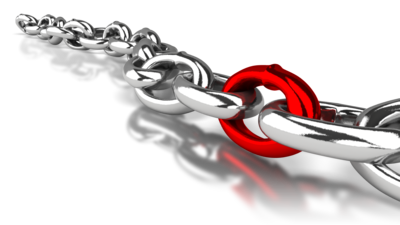 When you’re looking to build your own financial planning website you’ll need a domain name and somewhere to host the website. In this article we’ll explain the differences between domain names and hosting, and give you some tips on how to purchase both.
When you’re looking to build your own financial planning website you’ll need a domain name and somewhere to host the website. In this article we’ll explain the differences between domain names and hosting, and give you some tips on how to purchase both.
What Is A Domain Name?
A domain name is the address of your site. It’s the name that someone types in to the address bar in Internet Explorer to open up your website.
You’d be aware that domain names come with different ‘extensions’ (the bit after the name). You can have a .com domain name, or a .net name. Here in Australia, our domain names end in .com.au.
When you’re looking to buy a domain name, consider the geographic location of your business. If you own a financial planning business in Australia, then try and get a domain name with the .com.au extension. If your financial advisory business is in the UK, then a .co.uk extension could be more appropriate.
In a lot of cases, the domain name reflects the name of your business. In a follow up article I’ll expand on what makes a good domain name and explain why having more than one domain name and web site may be a better way to go.
What Is Domain Hosting?
 Your website consists of a bunch of files – text, images etc. These files need to be hosted (stored) somewhere on the internet so they can be viewed. This is where website hosting comes in.
Your website consists of a bunch of files – text, images etc. These files need to be hosted (stored) somewhere on the internet so they can be viewed. This is where website hosting comes in.
There are various hosting packages available and it pays to look around. In a lot of cases, the place where you buy your domain name from will also offer hosting. Unfortunately, this hosting can also be expensive and is not always the best option.
My hosting is via Hostgator. They offer a range of plans that allow you to host a single site or multiple sites depending on your needs.
Many experts say that it’s worthwhile having your website hosted on servers in the same country as the intended audience. So if you’re an Australian financial planning business, ideally you should have your site hosted on Australian servers. Google can see where a site is hosted, and having it hosted on an Australian server helps reinforce to Google that it’s an Australian business.
Importantly, many people offering hosting are actually re-sellers of hosting. They don’t actually own the server, they’re actually on-selling space on someone else’s server. So even if the person selling hosting lives in your country, it pays to check where the hosting is actually located.
Linking The Two Together
 When you purchase hosting, you’re given a login to a control panel (CPanel). This is where you set up a lot of the details about your hosting.
When you purchase hosting, you’re given a login to a control panel (CPanel). This is where you set up a lot of the details about your hosting.
On the left hand side of the CPanel you’ll see the details of your NameServers. Make a note of the NameServer details.
When you purchase a domain name, as part of the set up you’ll be asked about the hosting. At that point you enter the NameServer details.
So, when someone types in your domain name, they’re transferred to the NameServer that you’ve entered. This is a ‘place’ on the internet. When they arrive at the NameServer, their browser will begin to download the website files.
In our next article you’ll learn how to set up a domain in your CPanel, and ways to upload a website.
Suggested Links:
Hosting : Hostgator
Domains : 1and1.com, Domain Condo
